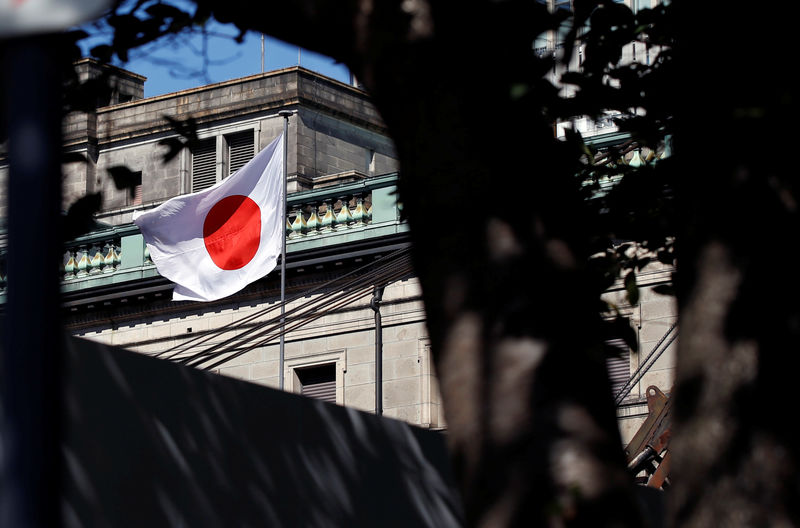By Leika Kihara
WASHINGTON (Reuters) - Deepening negative interest rates remains an option if the Bank of Japan were to ramp up stimulus, though any such move must be accompanied by fiscal and structural steps to be effective, a senior International Monetary Fund official said on Friday.
Odd Per Brekk, deputy director of the IMF's Asia and Pacific department, also said the BOJ had room to enhance communication by linking its commitment to keep rates low more clearly to its 2% inflation target.
"We think that lowering the negative interest rate remains an option. Of course, given stubbornly anchored inflation expectations, a whole package (of steps) is needed, especially structural reforms," Brekk, who is the IMF's mission chief of Japan, told Reuters on the sidelines of the IMF and World Bank fall meetings.
The BOJ deployed an aggressive monetary easing program in 2013 as part of the "three arrows" of Prime Minister Shinzo Abe's "Abenomics" stimulus policies, which were aimed at pulling the country out of deflation.
While the monetary easing and fiscal spending helped stimulate growth, critics say Abe failed to deliver on the structural reforms needed to boost Japan's growth potential, such as labor market reforms.
Brekk refrained from commenting on whether the BOJ could or should ease monetary policy at its rate review this month.
Markets are rife with speculation the BOJ could top up stimulus at its Oct. 30-31 meeting, after it signaled last month the chance of imminent action by warning of escalating overseas risks.
BOJ Governor Haruhiko Kuroda has said deepening negative rates is among key options if the central bank were to ease.
But the move is highly controversial as it would put further strain on financial institutions' profits and could discourage them from boosting lending. Some analysts warn that further rate cuts could push some regional banks into financial trouble.
Brekk said the plight of regional banks must be dealt with as a structural problem that can be addressed by strengthened oversight and supervision by bank regulators.
"What we are recommending is to deal with those issues through changes in business models. For regional banks, it may perhaps involve consolidation, though it may be difficult for many reasons," he said.
Under a policy dubbed yield curve control (YCC), the BOJ guides short-term rates at -0.1% and the 10-year government bond yield around 0% to achieve its elusive 2% inflation target.

It has pledged to keep rates at current ultra-low levels for an extended period of time, at least until around spring next year.